Thermography Applied to the Adhesion Phenomenon of Mortars with Additions of Submerged Arc Welding (SAW) Slag
Abstract
1. Introduction
Research Significance
2. Materials and Methods
3. Results
3.1. X-ray Fluorescence Spectrometry (XRF)
3.2. The Adhesion Strength Bond (Tas) of Mortar Coatings Applied to Ceramic and Spatter Dash/Ceramic Substrates
3.3. Infrared Thermography Analysis
3.4. Microscopic Analysis
4. Conclusions
- -
- The mortar samples with additions of SAW slag showed excellent performance, superior to that established in the adhesion resistance tests of the standard [16].
- -
- The substrate preparation with a spatter dash layer increases the adhesion of the mortar to the substrate.
- -
- The spatter dash layer (without hydrated lime and with lower proportions of sand) increases the capacity to transfer water to the substrate, as observed in thermographic analyses, causing refinement of the substrate pores and better anchoring.
- -
- This finding is reinforced by the fact of the transport, through water, of ions of calcium, silicon, iron, aluminium, magnesium, and potassium, among others, present in cement and in particular the ions present on the surface of mortars that are transported and stored in the pores of the substrates.
- -
- The water-yielding capacity of the mortar with additions of SAW slag to the substrate and the phenomenon of adhesion are directly related to the amount of hydrated lime and sand present in the system, as well as the preparation of the substrate with a spatter dash layer.
- -
- The capacity to retain mixing water in mortars is associated with the amount of hydrated lime presents in the system.
- -
- The ability to transfer water to the substrate is impaired and directly affects the anchorage of the mortar and consequently the adhesion strength, as all mortar samples of type O, with more hydrated lime, showed worse adhesion results. Moreover, as the amount of hydrated lime was reduced in the samples tested, the adhesion strength increased.
- -
- The proportions of sand in the system influence the water retention capacity of the mortar system and anchorages due to their volumetric defects as, by storing water and reducing the transport of cement sedimentary particles to the pores of the substrate through leaching, the anchoring process and adhesion strength are negatively influenced.
Author Contributions
Funding
Data Availability Statement
Acknowledgments
Conflicts of Interest
References
- Mendonça, S.V.S. Welding Support from Geopolymerization of Slag Welding Flux. Master’s Thesis, Universidade Estadual do Norte Fluminense, Rio de Janeiro, Brazil, 2017. (In Portuguese). [Google Scholar]
- Nimker, D.; Wattal, R. Recycling of submerged arc welding slag for sustainability. Prod. Manuf. Res. 2020, 8, 182–195. [Google Scholar] [CrossRef]
- Jindal, S.; Singh, H. Optimization of recycled slag-fresh flux mixture based upon weld bead quality for submerged arc welding of stainless steel. J. Mech. Behav. Mater. 2021, 30, 9–18. [Google Scholar] [CrossRef]
- Garg, J.; Singh, K. Slag recycling in submerged arc welding and its effects on the quality of stainless-steel claddings. Mater. Des. 2016, 108, 689–698. [Google Scholar] [CrossRef]
- Apolônio, P.H.; Mota, J.M.F.; Barbosa, F.R.; Silva, A.J.C.E.; Silva, G.A.; Oliveira, R.A. Análise comparativa da resistência de aderência do chapisco com diferentes relações água-ligante e adição de metacaulim. In Proceedings of the Simpósio Brasileiro de Tecnologia das Argamassas, Porto Alegre, Brazil, 28–30 April 2015; pp. 1–13. (In Portuguese). [Google Scholar]
- Maranhão, F.L.; Loh, K.; John, V.M. The influence of moisture on the deformability of cement-polymer adhesive mortar. Constr. Build. Mater. 2011, 25, 2948–2954. [Google Scholar] [CrossRef]
- Pino, F.; Fermo, P.; La Russa, M.; Ruffolo, S.; Comite, V.; Baghdachi, J.; Pecchioni, E.; Fratini, F.; Cappelletti, G. Advanced mortar coatings for cultural heritage protection. Durability towards prolonged UV and outdoor exposure. Environ. Sci. Pollut. Res. 2017, 24, 12608–12617. [Google Scholar] [CrossRef]
- Barberousse, H.; Ruot, B.; Yéprémian, C.; Boulon, G. An assessment of façade coatings against colonisation by aerial algae and cyanobacteria. Build. Environ. 2007, 42, 2555–2561. [Google Scholar] [CrossRef]
- Paiva, H.; Esteves, L.P.; Cachim, P.B.; Ferreira, V.M. Rheology and hardened properties of single-coat render mortars with different types of water retaining agents. Constr. Build. Mater. 2009, 23, 1141–1146. [Google Scholar] [CrossRef]
- Spósito, F.A.; Higuti, R.T.; Tashima, M.M.; Akasaki, J.L.; Melges, J.L.P.; Assunção, C.C.; Bortoletto, M.; Silva, R.G.; Fioriti, C.F. Incorporation of PET wastes in rendering mortars based on Portland cement/hydrated lime. J. Build. Eng. 2020, 32, 101506. [Google Scholar] [CrossRef]
- Ramos, M.C.; Barbosa, J.A. Basic Unit Cost Simulation from Free-Stall Design To Dairy Cattle Confinement Using Different Construction Techniques. Eng. Agrícola 2016, 36, 972–983. [Google Scholar] [CrossRef][Green Version]
- Botas, S.; Veiga, R.; Velosa, A. Bond strength in mortar/ceramic tile interface—Testing procedure and adequacy evaluation. Mater. Struct. 2017, 50, 211. [Google Scholar] [CrossRef]
- Santos, C.; Rocha, J.; Póvoas, Y. Use of infrared thermography for detection of moisture sources in internal walls of buildings. Ambient. Constr. 2019, 19, 105–127. [Google Scholar] [CrossRef]
- NBR 7200; Render Made of Inorganic Mortars Applied on Walls and Ceilings-Procedure for Application. Brazilian Association of Technical Standards: Rio de Janeiro, Brazil, 1998.
- Hossain, M.M.; Karim, M.R.; Hasan, M.; Hossain, M.K.; Zain, M.F.M. Durability of mortar and concrete made up of pozzolans as a partial replacement of cement: A review. Constr. Build. Mater. 2016, 116, 128–140. [Google Scholar] [CrossRef]
- Li, M.; Zhu, X.; Mukherjee, A.; Huang, M.; Achal, V. Biomineralization in metakaolin modified cement mortar to improve its strength with lowered cement content. J. Hazard. Mater. 2017, 329, 178–184. [Google Scholar] [CrossRef] [PubMed]
- Shu, X.; Graham, R.K.; Huang, B.; Burdette, E.G. Hybrid effects of carbon fibers on mechanical properties of Portland cement mortar. Mater. Des. 2015, 65, 1222–1228. [Google Scholar] [CrossRef]
- Ince, C.; Derogar, S.; Ball, R.J.; Ekinci, A.; Yuzer, N. Long-term mechanical properties of cellulose fibre-reinforced cement mortar with diatomite. Adv. Cem. Res. 2018, 31, 342–353. [Google Scholar] [CrossRef]
- Ramakrishna, G.; Priyadharshini, S. Effect of embedment length of untreated natural fibres on the bond behaviour in cement mortar. Front. Struct. Civ. Eng. 2018, 12, 454–460. [Google Scholar] [CrossRef]
- Zhang, B.; Tan, H.; Shen, W.; Xu, G.; Ma, B.; Ji, X. Nano-silica and silica fume modified cement mortar used as Surface Protection Material to enhance the impermeability. Cem. Concr. Compos. 2018, 92, 7–17. [Google Scholar] [CrossRef]
- Lu, J.X.; Poon, C.S. Use of waste glass in alkali-activated cement mortar. Constr. Build. Mater. 2018, 160, 399–407. [Google Scholar] [CrossRef]
- Chaidachatorn, K.; Suebsuk, J.; Horpibulsuk, S.; Arulrajah, A. Extended water/cement ratio law for cement mortar containing recycled asphalt pavement. Constr. Build. Mater. 2019, 196, 457–467. [Google Scholar] [CrossRef]
- Al-Tulaian, B.S.; Al-Shannag, M.J.; Al-Hozaimy, A.R. Recycled plastic waste fibers for reinforcing Portland cement mortar. Constr. Build. Mater. 2016, 127, 102–110. [Google Scholar] [CrossRef]
- Zhang, J.; Shi, C.; Li, Y.; Pan, X.; Poon, C.S.; Xie, Z. Influence of carbonated recycled concrete aggregate on properties of cement mortar. Constr. Build. Mater. 2015, 98, 1–7. [Google Scholar] [CrossRef]
- Carasek, H.; Araújo, R.C.; Cascudo, O.; Angelim, R. Parâmetros da areia que influenciam a consistência e a densidade de massa das argamassas de revestimento. Matéria 2016, 21, 714–732. [Google Scholar] [CrossRef]
- NBR 7175; Hydrated Lime for Mortars—Requirements. Brazilian Association of Technical Standards: Rio de Janeiro, Brazil, 2003.
- De Moura, M.V.; Paiva, S.A.; Rodrigues, V.D.; Felipe, T.; Santos, D.A.; Berenguer, R.A. Analysis of the influence of mechanical properties of cementitious composites using submerged arc welding (SAW) slag recycled aggregate. Revista Gestão Secretariado 2024, 15, e3623. [Google Scholar] [CrossRef]
- NBR 13276; Mortars Applied on Walls and Ceilings—Determination of the Consistence Index. Brazilian Association of Technical Standards: Rio de Janeiro, Brazil, 2016.
- NBR 13749; Render Made of Inorganic Mortar Walls and Ceillings Applications—Specification. Brazilian Association of Technical Standards: Rio de Janeiro, Brazil, 2013.
- ASTM C618; Standard Specification for Coal Fly Ash and Raw or Calcined Natural Pozzolan for Use in Concrete. American Society for Testing and Materials: West Conshohocken, PA, USA, 2017.
- NBR 12653; Pozzolanic Materials—Requirements. Brazilian Association of Technical Standards: Rio de Janeiro, Brazil, 2015.
- Pachta, V.; Serpezoudi, C.; Stefanidou, M. The influence of pre-wetting with consolidants on the adhesion of double-layer lime based mortars. J. Cult. Herit. 2020, 46, 21–30. [Google Scholar] [CrossRef]
- dos Santos, A.R.L.; da Silva Veiga, M.D.R.; dos Santos Silva, A.M.; de Brito, J.M.C.L. Tensile bond strength of lime-based mortars: The role of the microstructure on their performance assessed by a new non-standard test method. J. Build. Eng. 2020, 29, 21–30. [Google Scholar] [CrossRef]
- Almeida, J.A.P.P.; Pereira, E.B.; Barros, J.A.O. Assessment of overlay masonry strengthening system under in-plane monotonic and cyclic loading using the diagonal tensile test. Constr. Build. Mater. 2015, 94, 851–865. [Google Scholar] [CrossRef]
- Carasek, H.; Japiassú, P.; Cascudo, O.; Velosa, A. Bond between 19th Century lime mortars and glazed ceramic tiles. Constr. Build. Mater. 2014, 59, 85–98. [Google Scholar] [CrossRef]
- Huang, Y.; Shih, P.; Hsu, K.T.; Chiang, C.H. To identify the defects illustrated on building facades by employing infrared thermography under shadow. NDT E Int. 2020, 111, 102240. [Google Scholar] [CrossRef]
- Dong, L.; Wang, B.; Wang, H.; Xiang, M.; Chen, X.; Ma, G.; Di, Y.; Guo, W.; Kang, J.; Zhou, X. Effects of crack surface roughness on crack heat generation characteristics of ultrasonic infrared thermography. Infrared Phys. Technol. 2020, 106, 103262. [Google Scholar] [CrossRef]
- Rani, M.F.H.; Razlan, Z.M.; Shahriman, A.B.; Ibrahim, Z.; Wan, W.K. Comparative study of surface temperature of lithium-ion polymer cells at different discharging rates by infrared thermography and thermocouple. Int. J. Heat Mass Transf. 2021, 153, 119595. [Google Scholar] [CrossRef]
- Al-Habaibeh, A.; Sen, A.; Chilton, J. Evaluation Tool for The Thermal Performance of Retrofitted Buildings Using an Integrated Approach of Deep Learning Artificial Neural Networks and Infrared Thermography. Energy Built Environ. 2021, 4, 345–365. [Google Scholar] [CrossRef]
- Rocha, J.H.A.; Santos, C.F.; Póvoas, Y.V. Evaluation of the infrared thermography technique for capillarity moisture detection in buildings. Procedia Struct. Integr. 2018, 11, 107–113. [Google Scholar] [CrossRef]
- Miranda, L.F.R.; Selmo, S.M.S. CDW recycled aggregate renderings: Part I—Analysis of the effect of materials finer than 75 μm on mortar properties. Constr. Build. Mater. 2006, 20, 615–624. [Google Scholar] [CrossRef]
- Hendrickx, R.; Roels, S.; Van Balen, K. Measuring the water capacity and transfer properties of fresh mortar. Cem. Concr. Res. 2010, 40, 1650–1655. [Google Scholar] [CrossRef]
- Hall, C.; Tse, T.K.M. Water movement in porous building materials-VII. The sorptivity of mortars. Build. Environ. 1986, 21, 113–118. [Google Scholar] [CrossRef]
- Liu, C.; Qian, R.; Liu, Z.; Liu, G.; Zhang, Y. Multi-scale modelling of thermal conductivity of phase change material/recycled cement paste incorporated cement-based composite material. Mater. Des. 2020, 191, 108646. [Google Scholar] [CrossRef]
- Ke, X.; Bernal, S.A.; Provis, J.L.; Lothenbach, B. Thermodynamic modelling of phase evolution in alkali-activated slag cements exposed to carbon dioxide. Cem. Concr. Res. 2020, 136, 106158. [Google Scholar] [CrossRef]
- Borštnar, M.; Daneu, N.; Dolenec, S. Phase development and hydration kinetics of belite-calcium sulfoaluminate cements at different curing temperatures. Ceram. Int. 2020, 46, 29421–29428. [Google Scholar] [CrossRef]
- Singh, K.; Pandey, S. Recycling of slag to act as a flux in submerged arc welding. Resour. Conserv. Recycl. 2009, 53, 552–558. [Google Scholar] [CrossRef]
- Jiang, C.; Fang, J.; Chen, J.Y.; Gu, X.L. Modeling the instantaneous phase composition of cement pastes under elevated temperatures. Cem. Concr. Res. 2020, 130, 105987. [Google Scholar] [CrossRef]
- Rocha, J.H.A.; Toledo Filho, R.D. Microstructure, hydration process, and compressive strength assessment of ternary mixtures containing Portland cement, recycled concrete powder, and metakaolin. J. Clean. Prod. 2024, 434, 140085. [Google Scholar] [CrossRef]
- Angulo, S.C.; Carrijo, P.M.; Figueiredo, A.D.; Chaves, A.P.; John, V.M. On the classification of mixed construction and demolition waste aggregate by porosity and its impact on the mechanical performance of concrete. Mater. Struct. Constr. 2010, 43, 519–528. [Google Scholar] [CrossRef]
- Zunino, F.; Scrivener, K. The reaction between metakaolin and limestone and its effect in porosity refinement and mechanical properties. Cem. Concr. Res. 2021, 140, 106307. [Google Scholar] [CrossRef]
- Sui, S.; Shan, Y.; Li, S.; Geng, Y.; Wang, F.; Liu, Z.; Jiang, J.; Wang, L.; Yang, Z. Investigation on chloride migration behavior of metakaolin-quartz-limestone blended cementitious materials with electrochemical impedance spectroscopy method. Case Stud. Constr. Mater. 2024, 20, e03064. [Google Scholar] [CrossRef]
- Brekailo, F.; Pereira, E.; Pereira, E.; Filho, J.H.; De Medeiros, M.H.F. Evaluation of the reactive potential of additions of red ceramic waste and comminuted concrete of CDW in cement matrix. Ceramica 2019, 65, 351–358. [Google Scholar] [CrossRef]
- Basto, P.A.; Junior, H.S.; Neto, A.A.M. Characterization and pozzolanic properties of sewage sludge ashes (SSA) by electrical conductivity. Cem. Concr. Compos. 2019, 104, 103410. [Google Scholar] [CrossRef]
- Zhang, X.; Bai, Y.; Luo, Q. Exploring synergistic effects and hydration mechanisms in metakaolin-blended cement system with varying metakaolin and wollastonite content. Constr. Build. Mater. 2024, 425, 135962. [Google Scholar] [CrossRef]
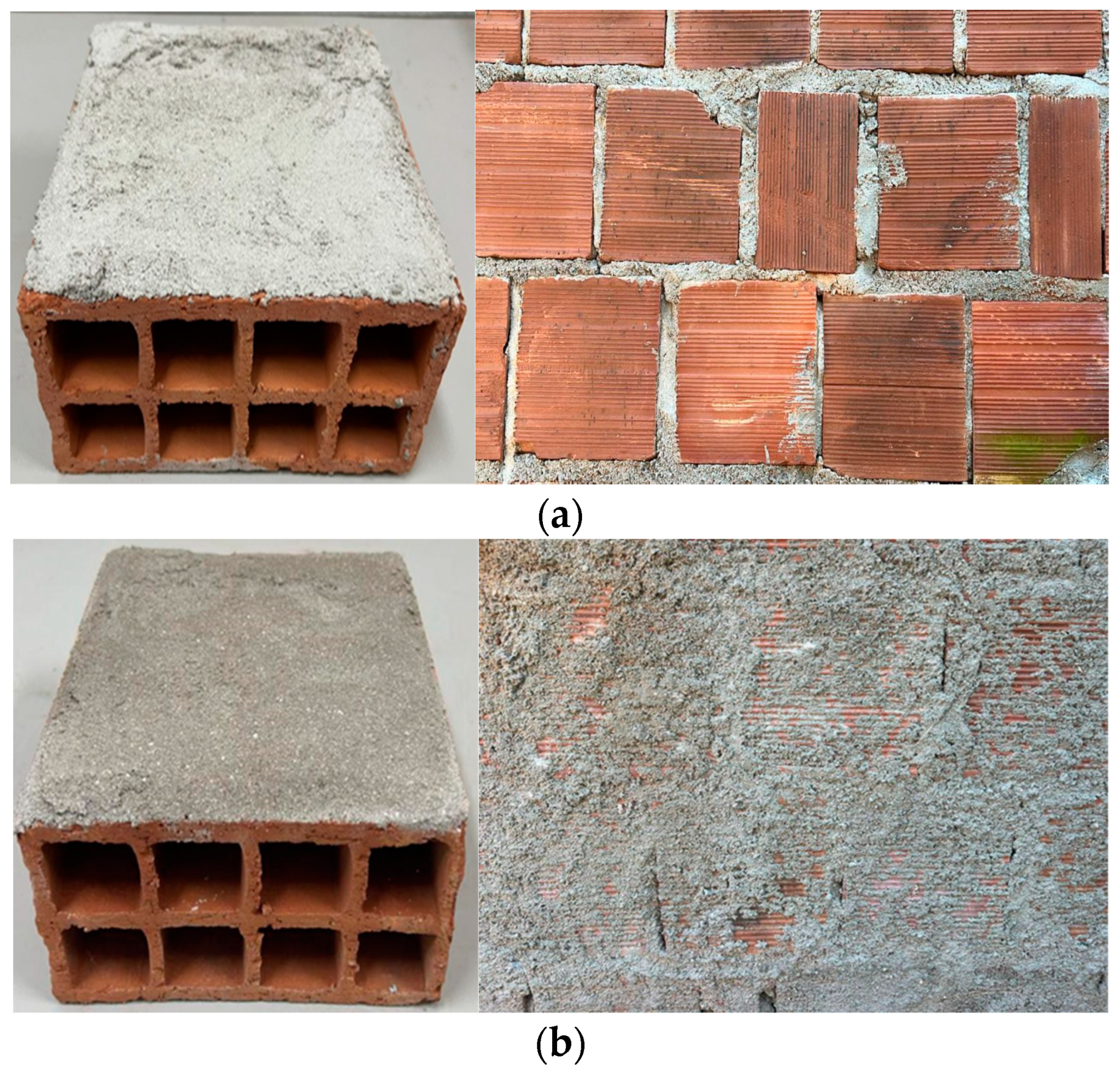
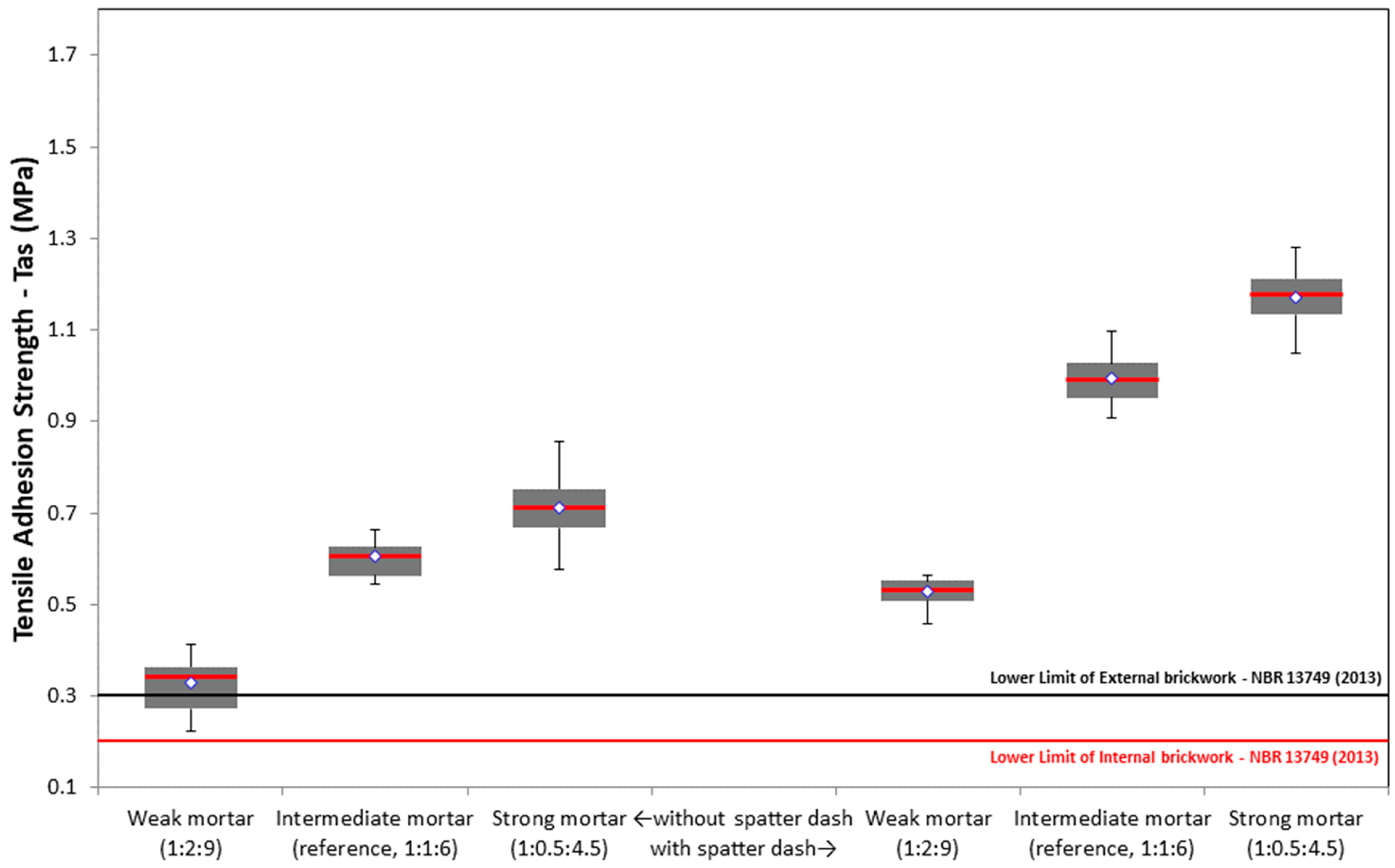


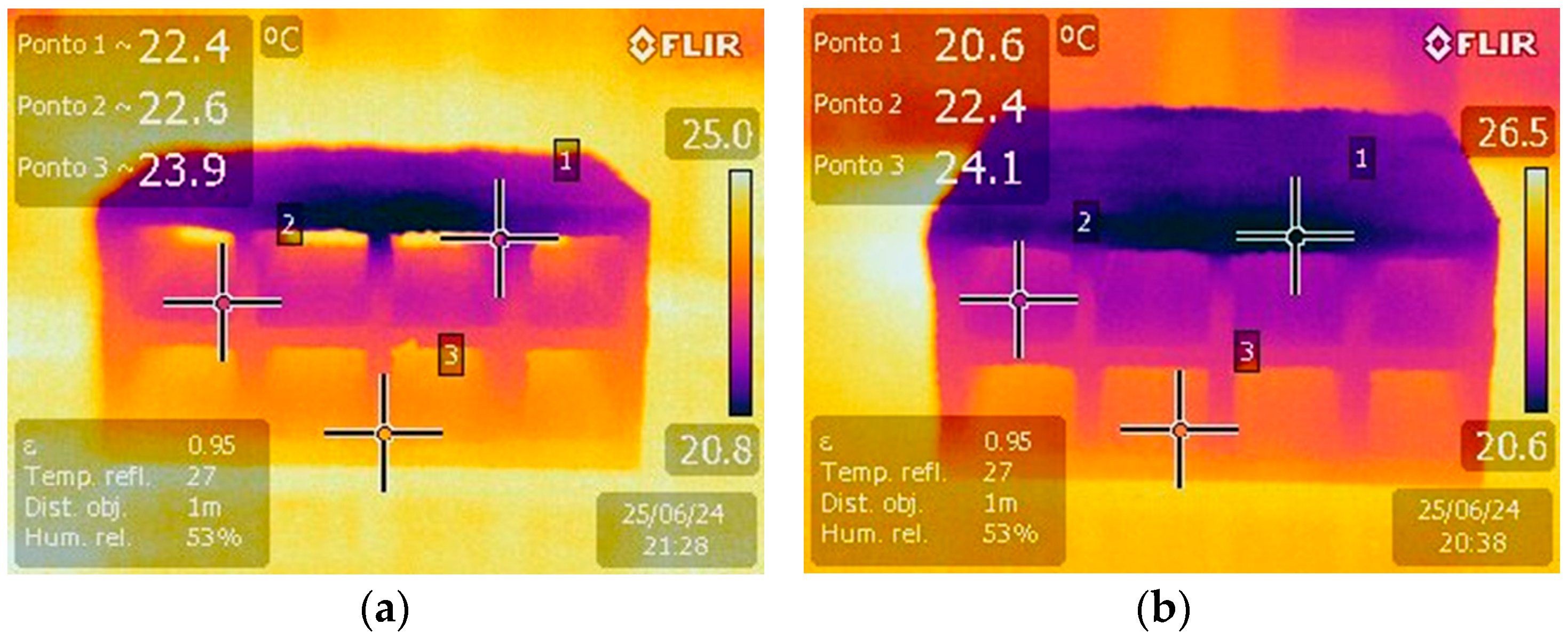
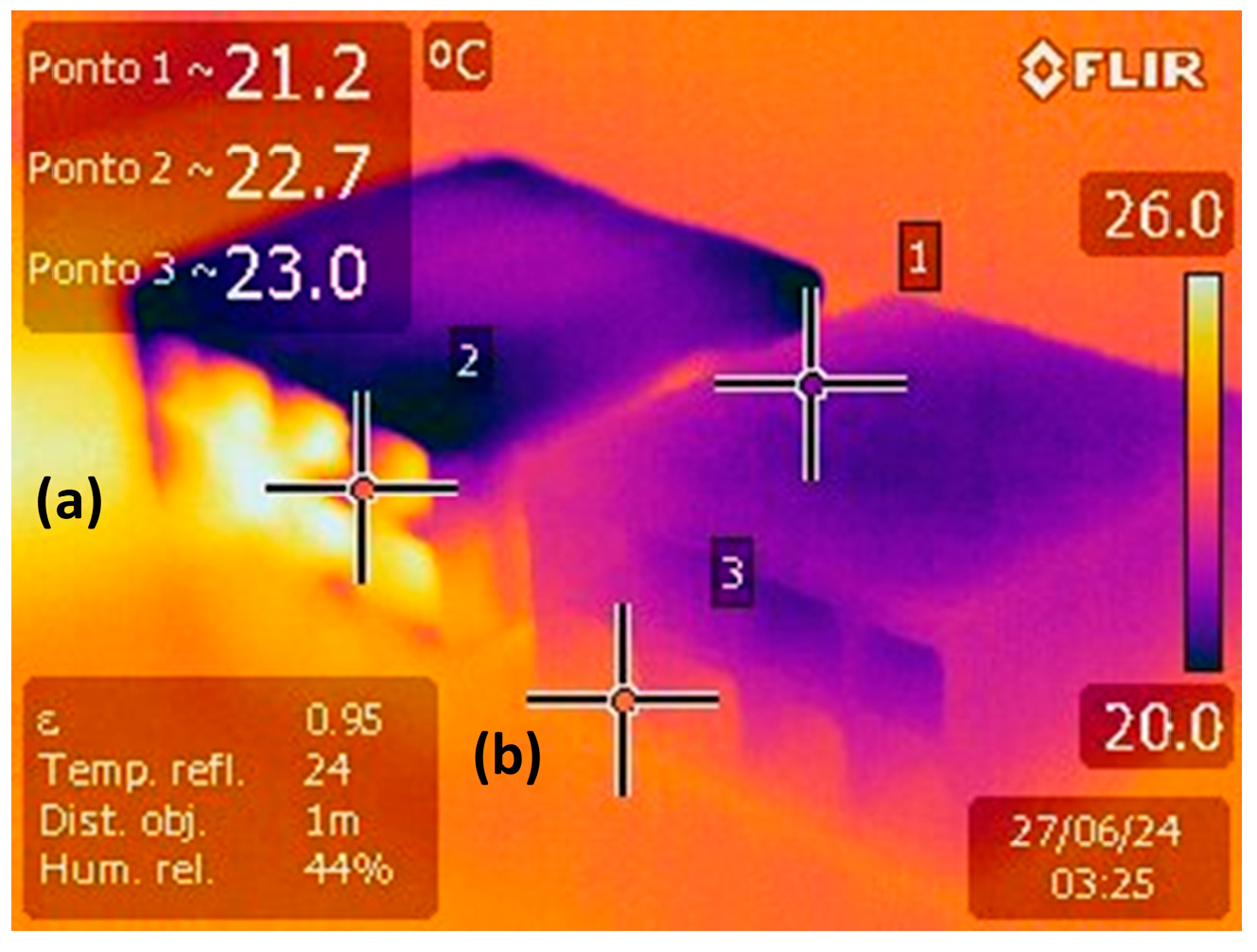
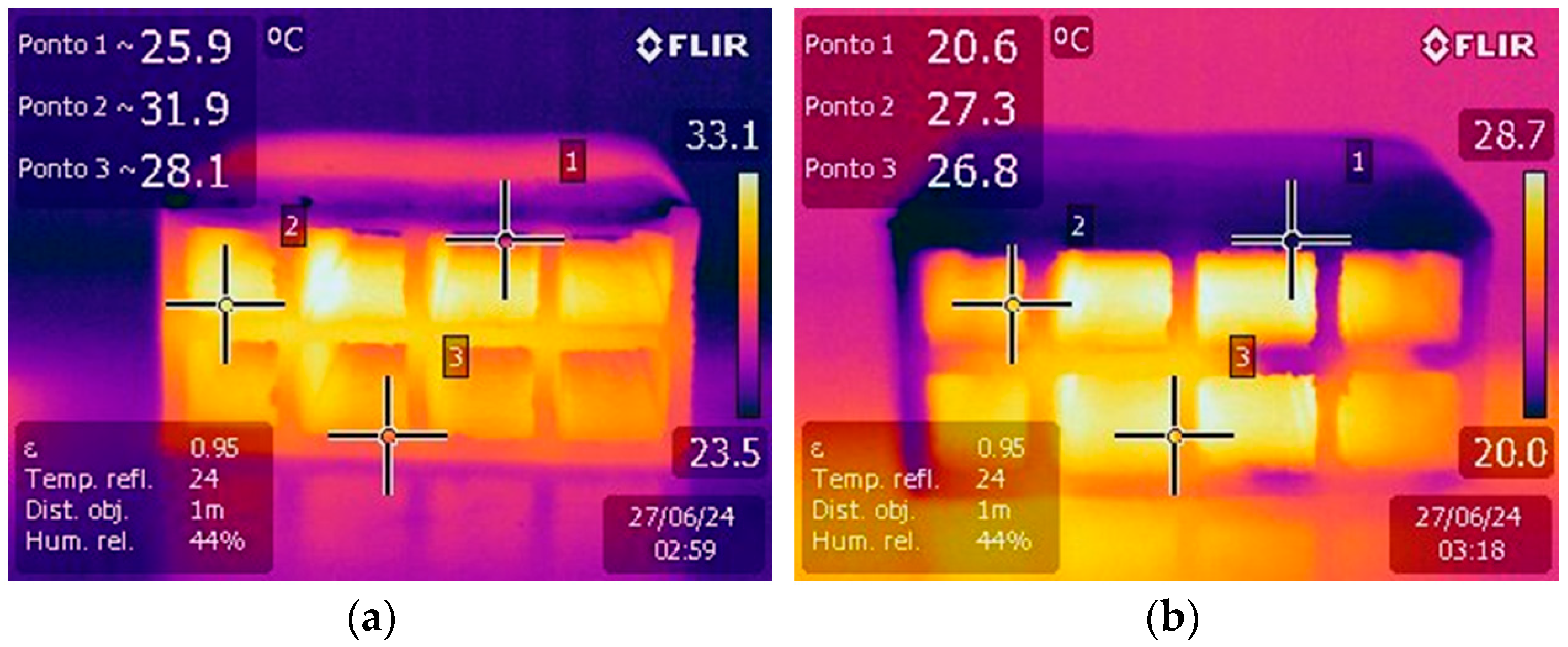
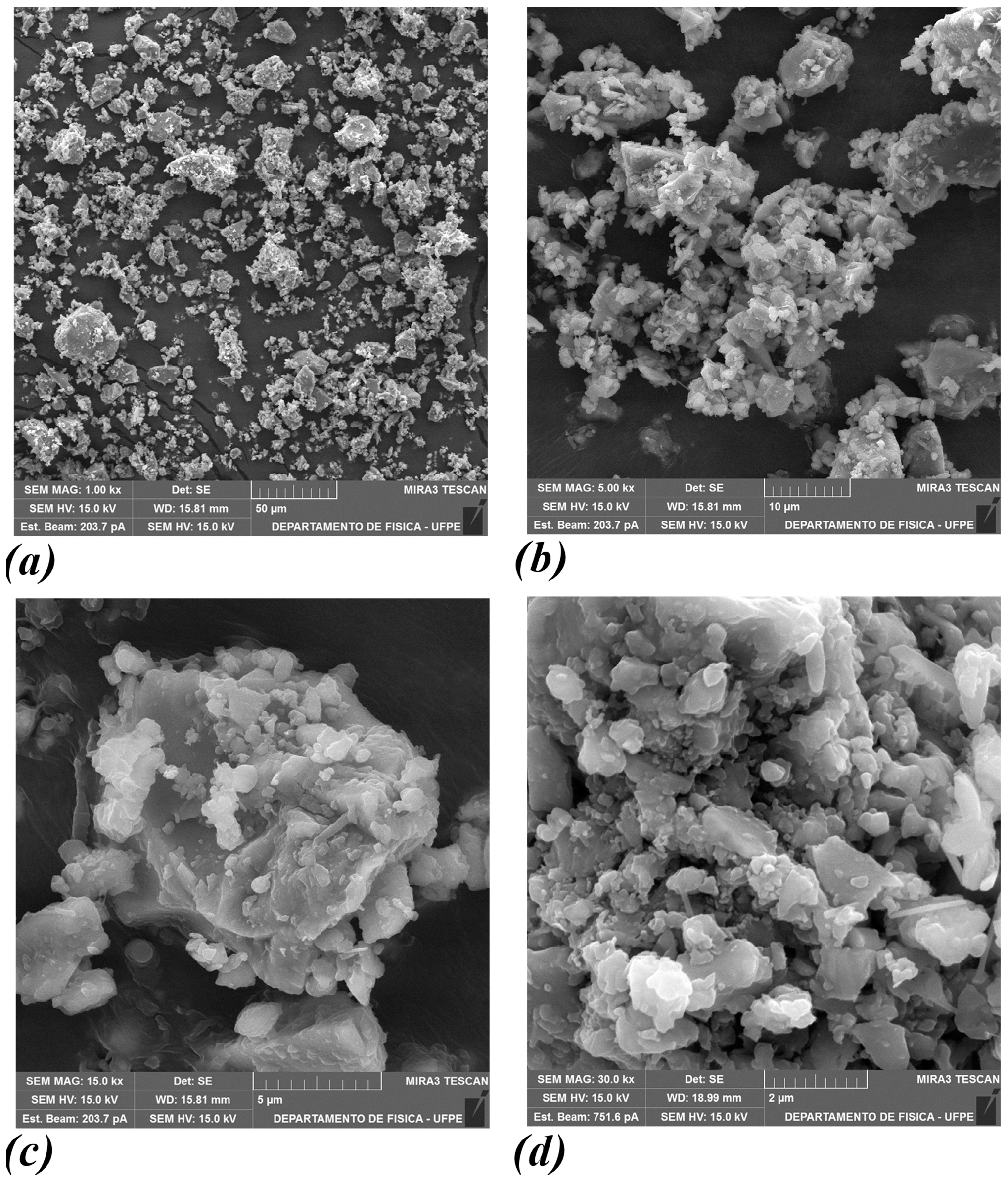
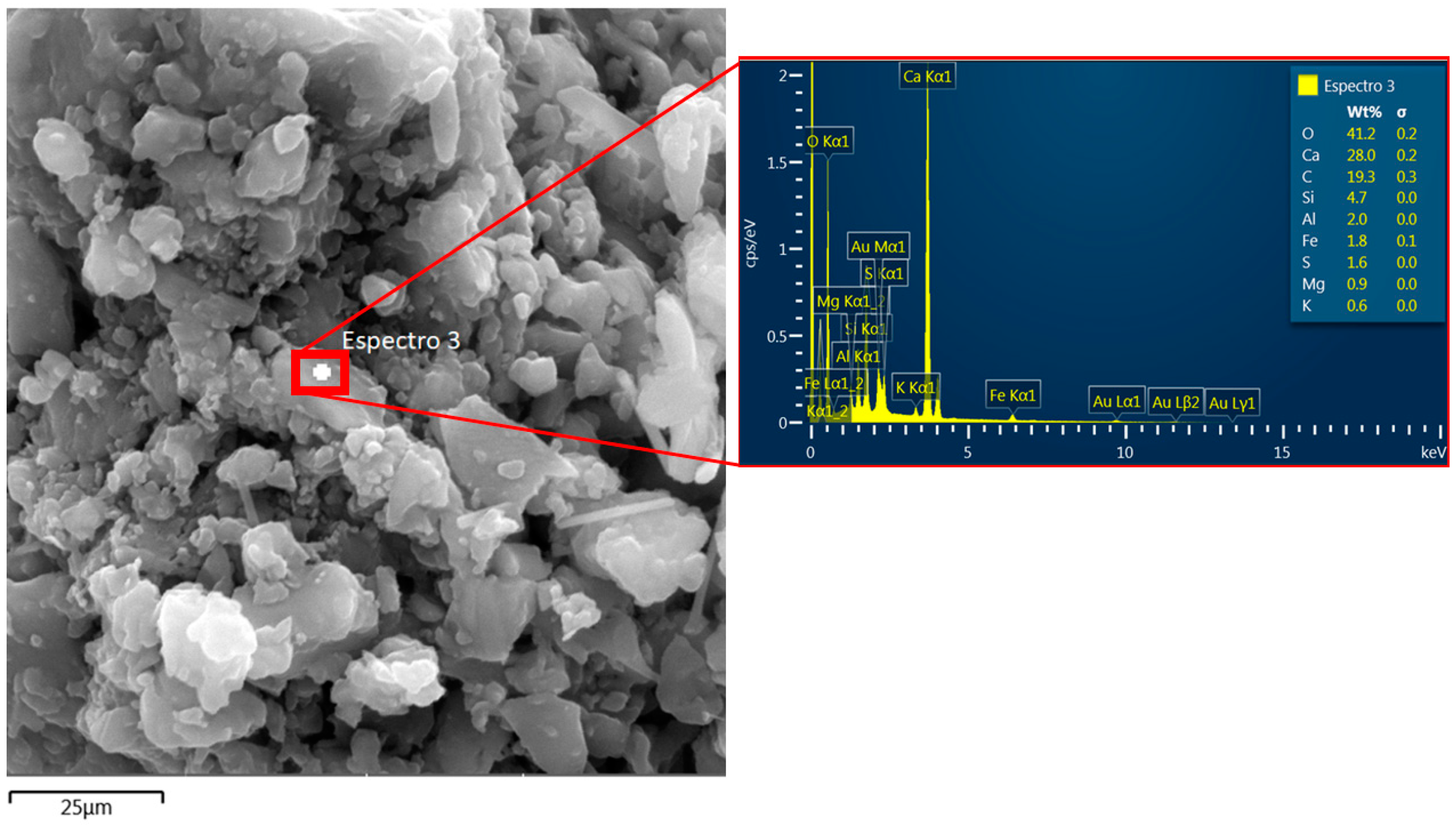
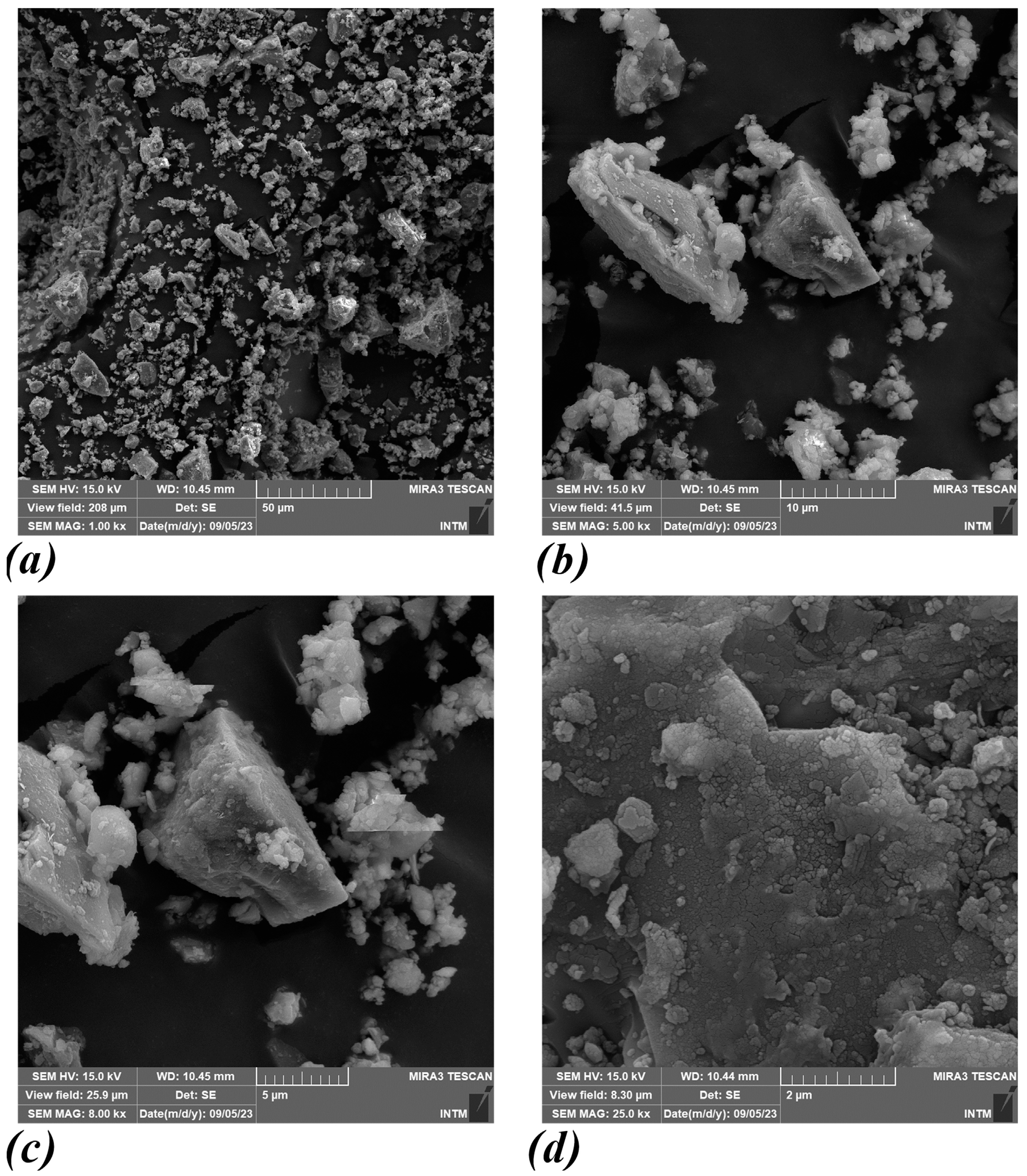
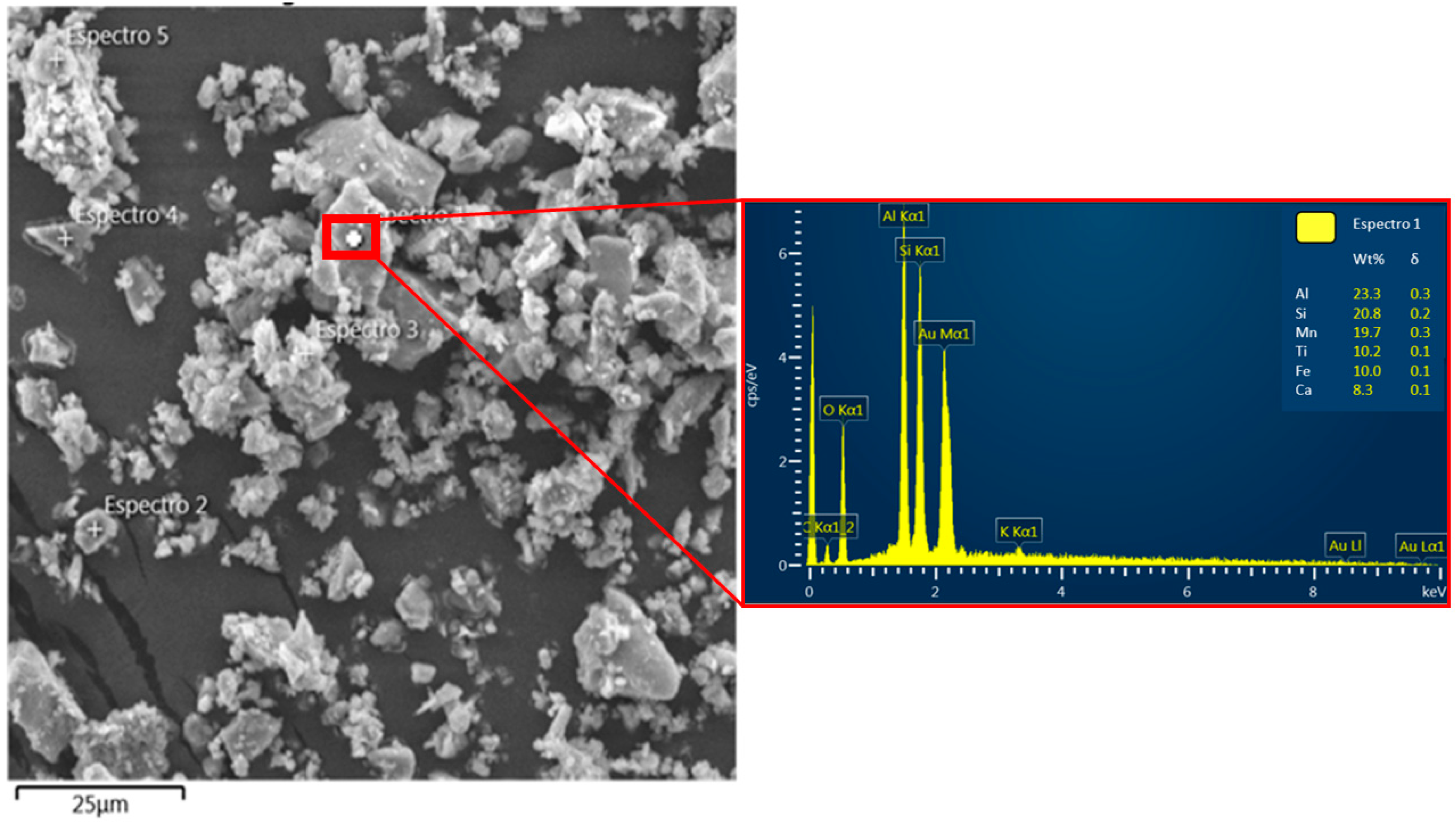
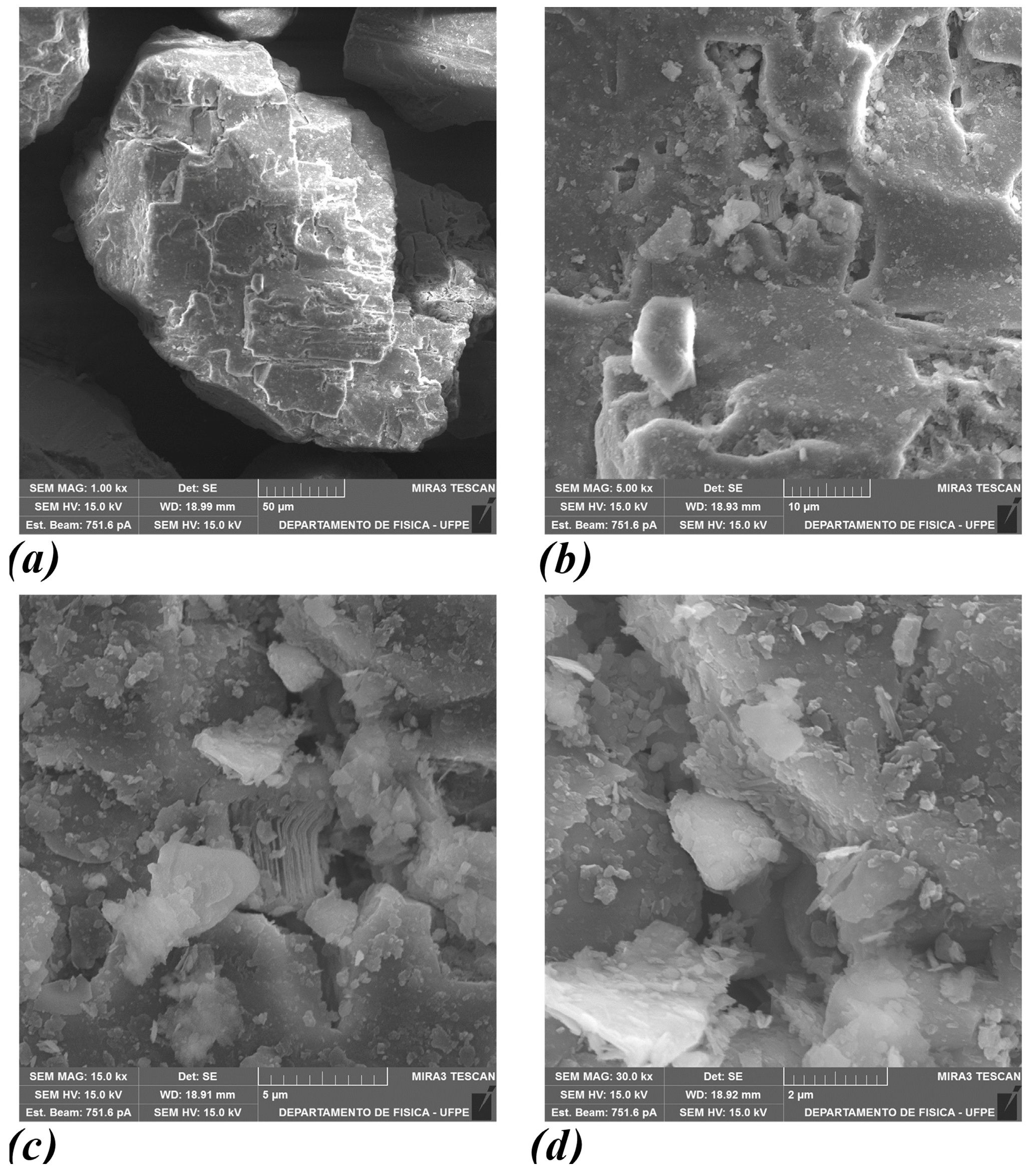
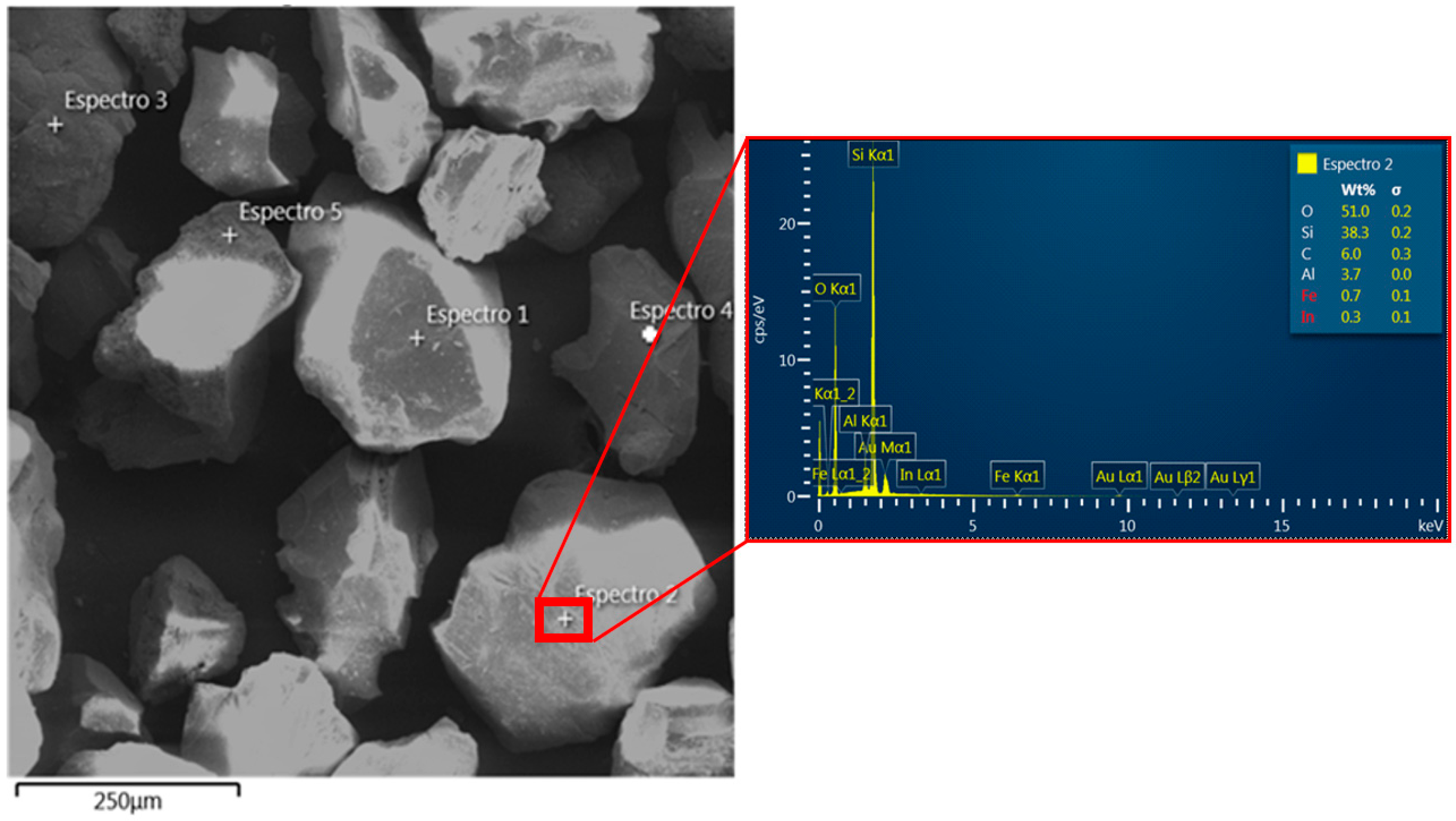
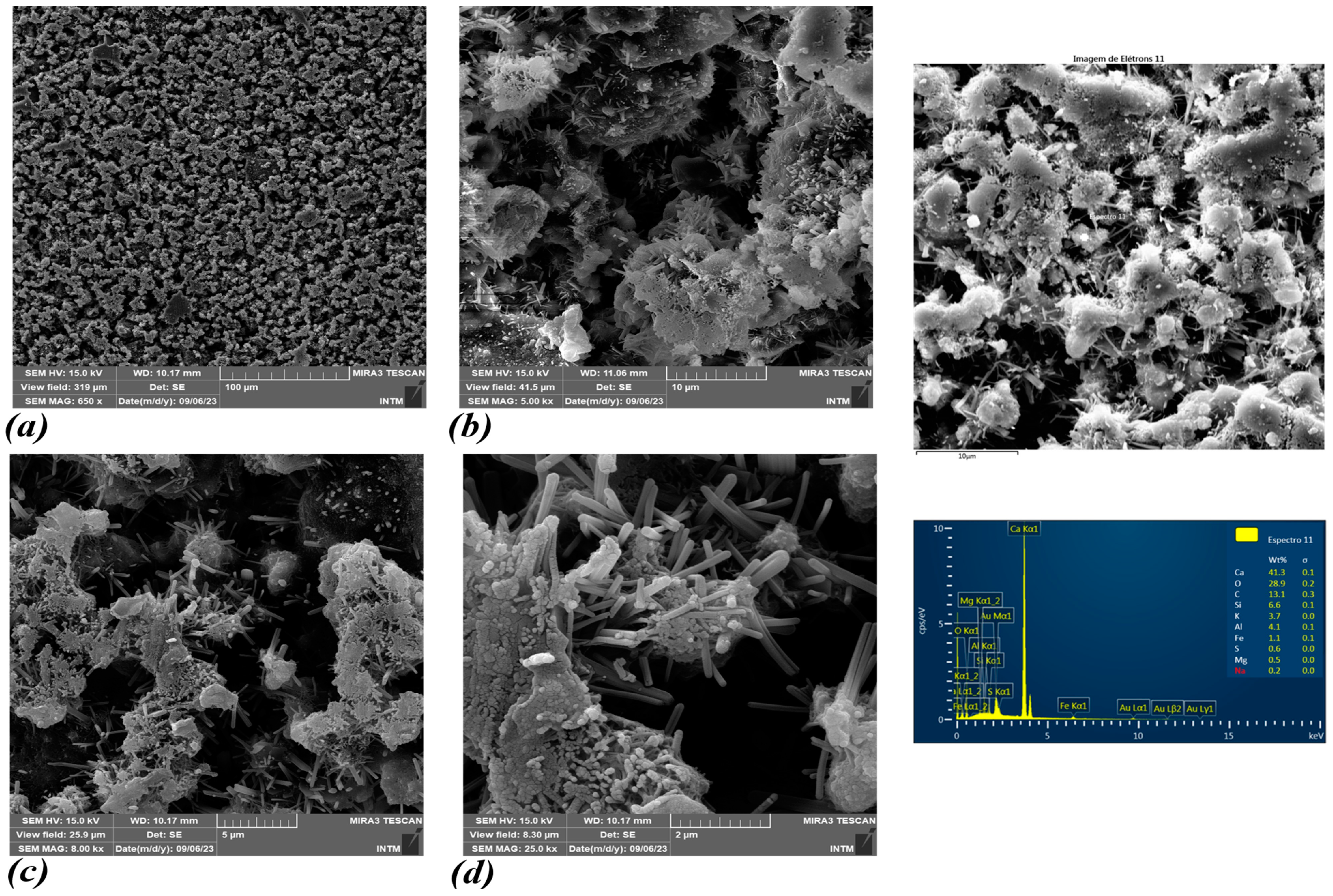
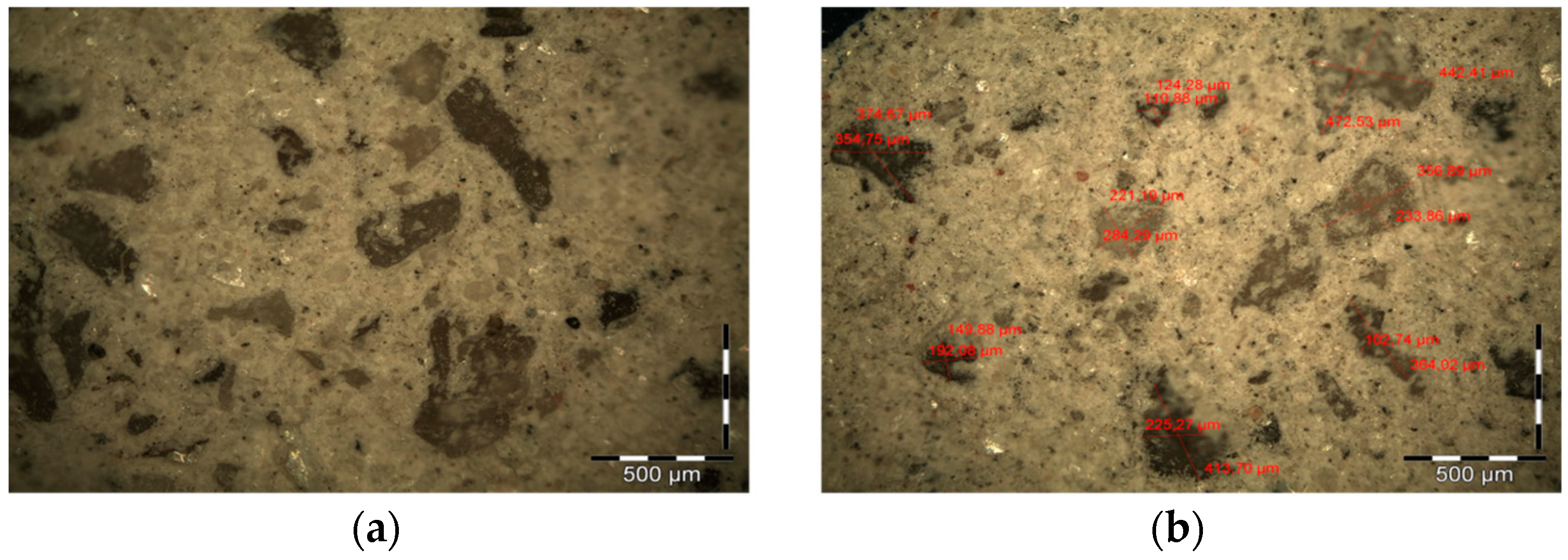
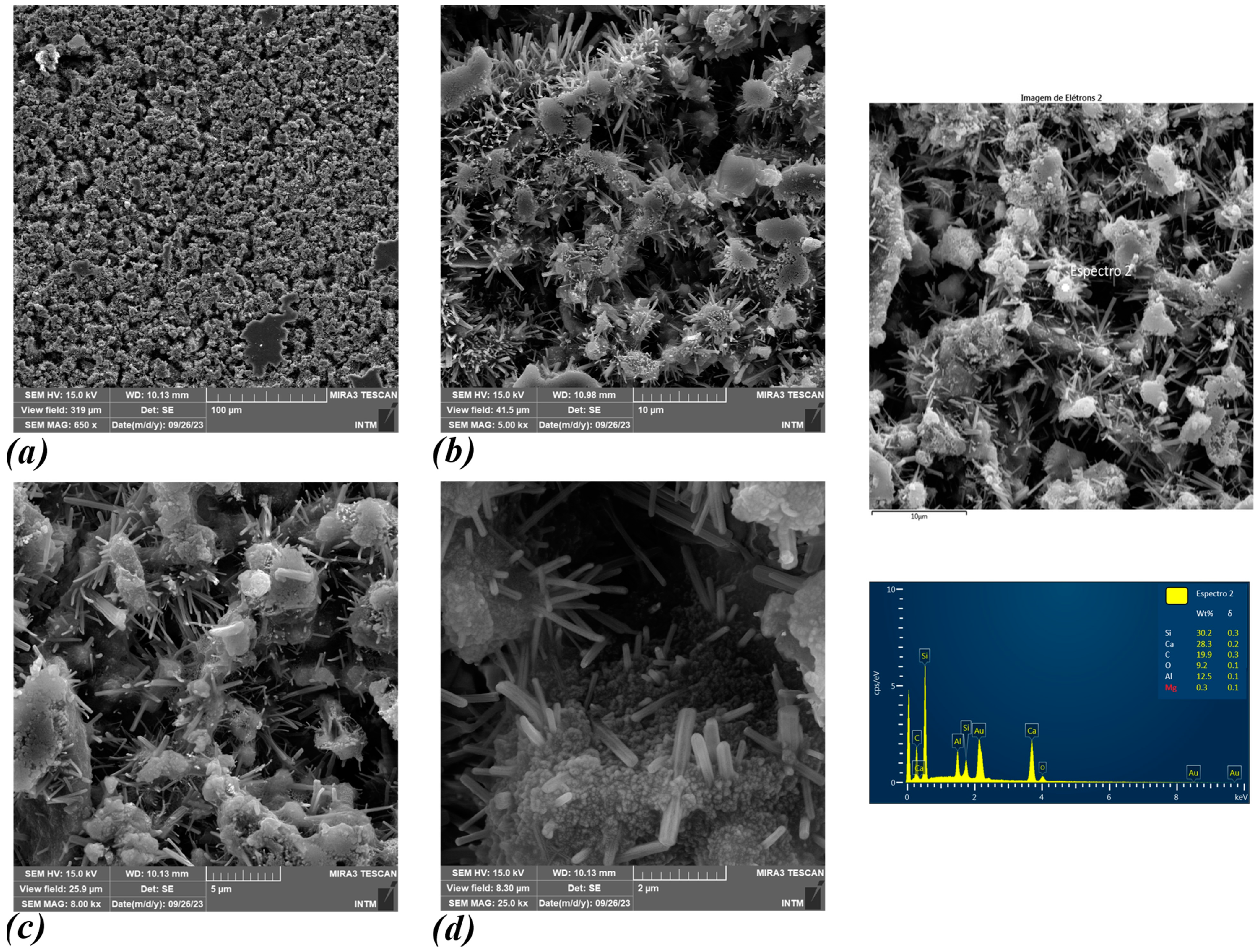
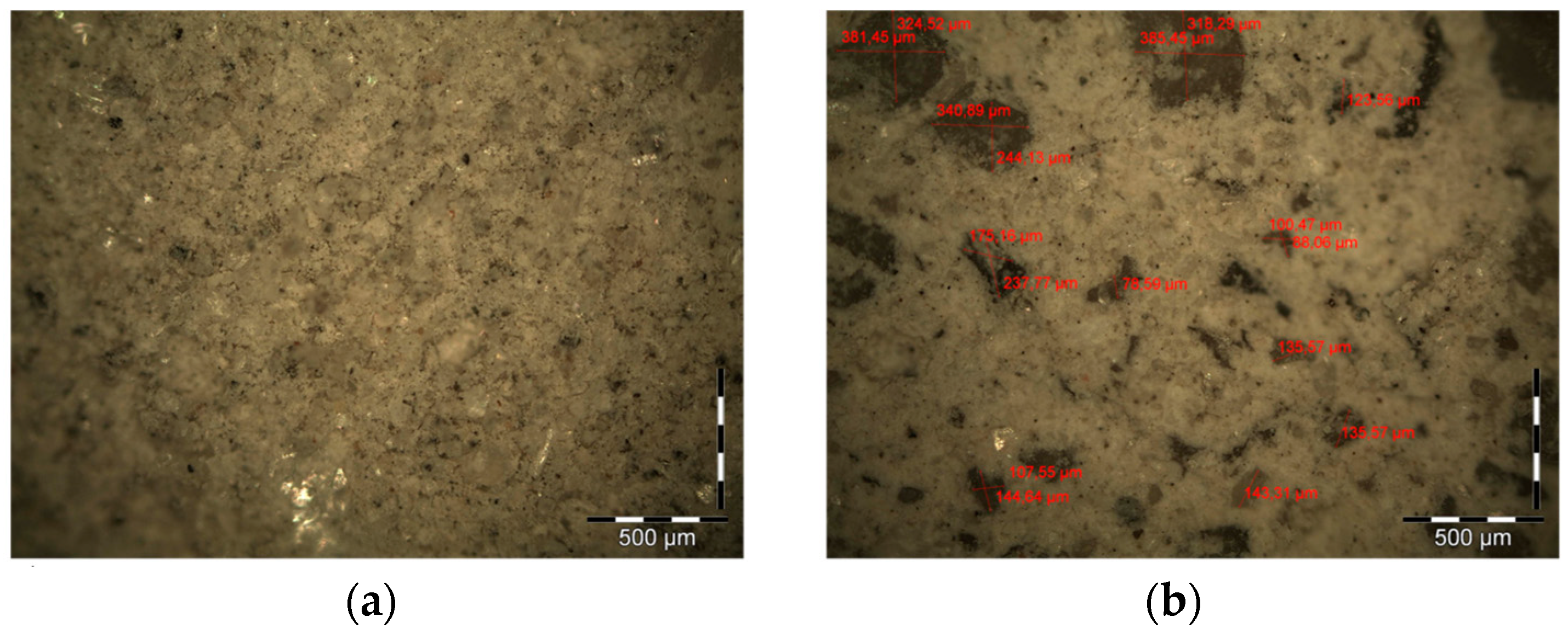
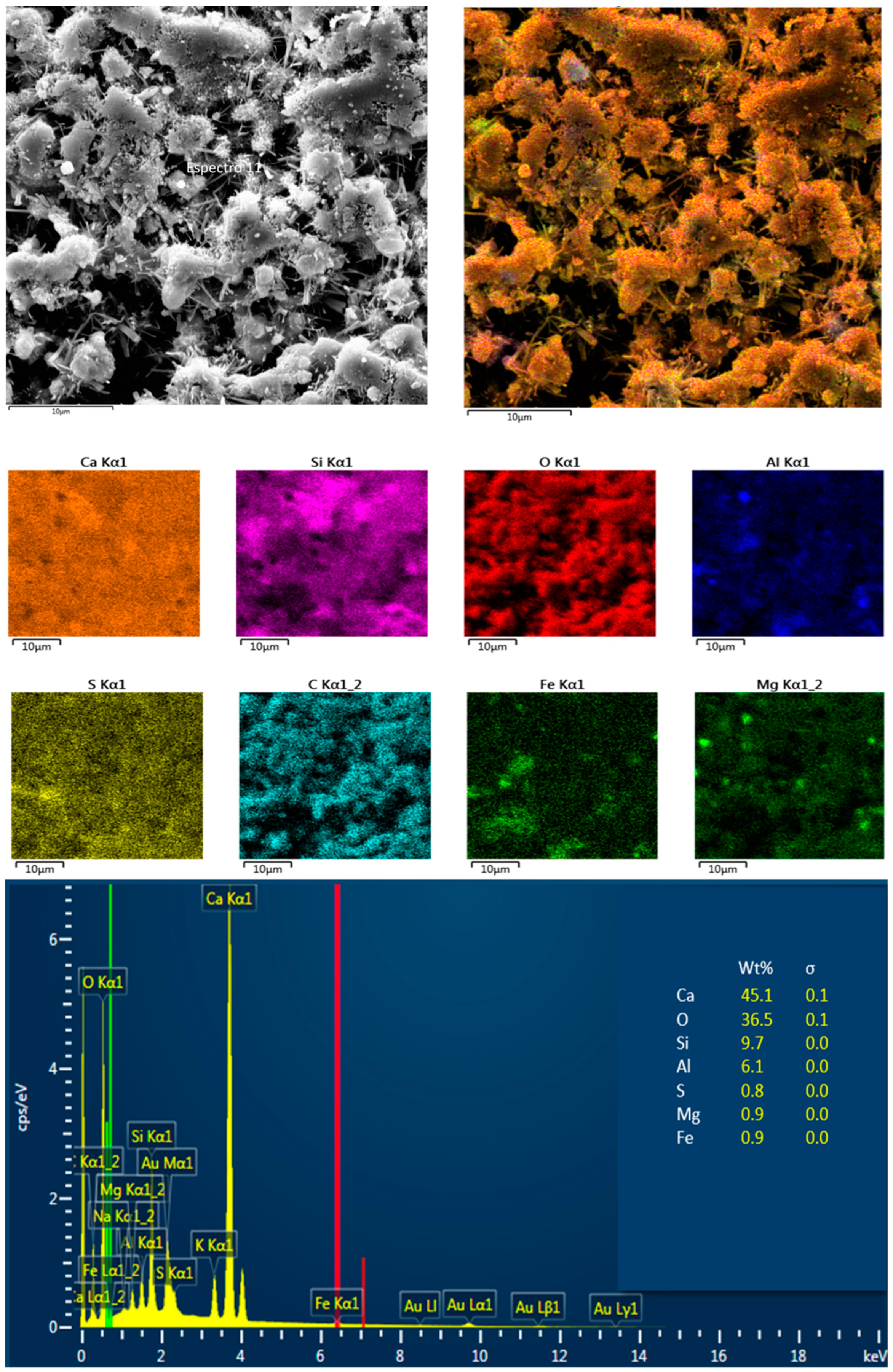
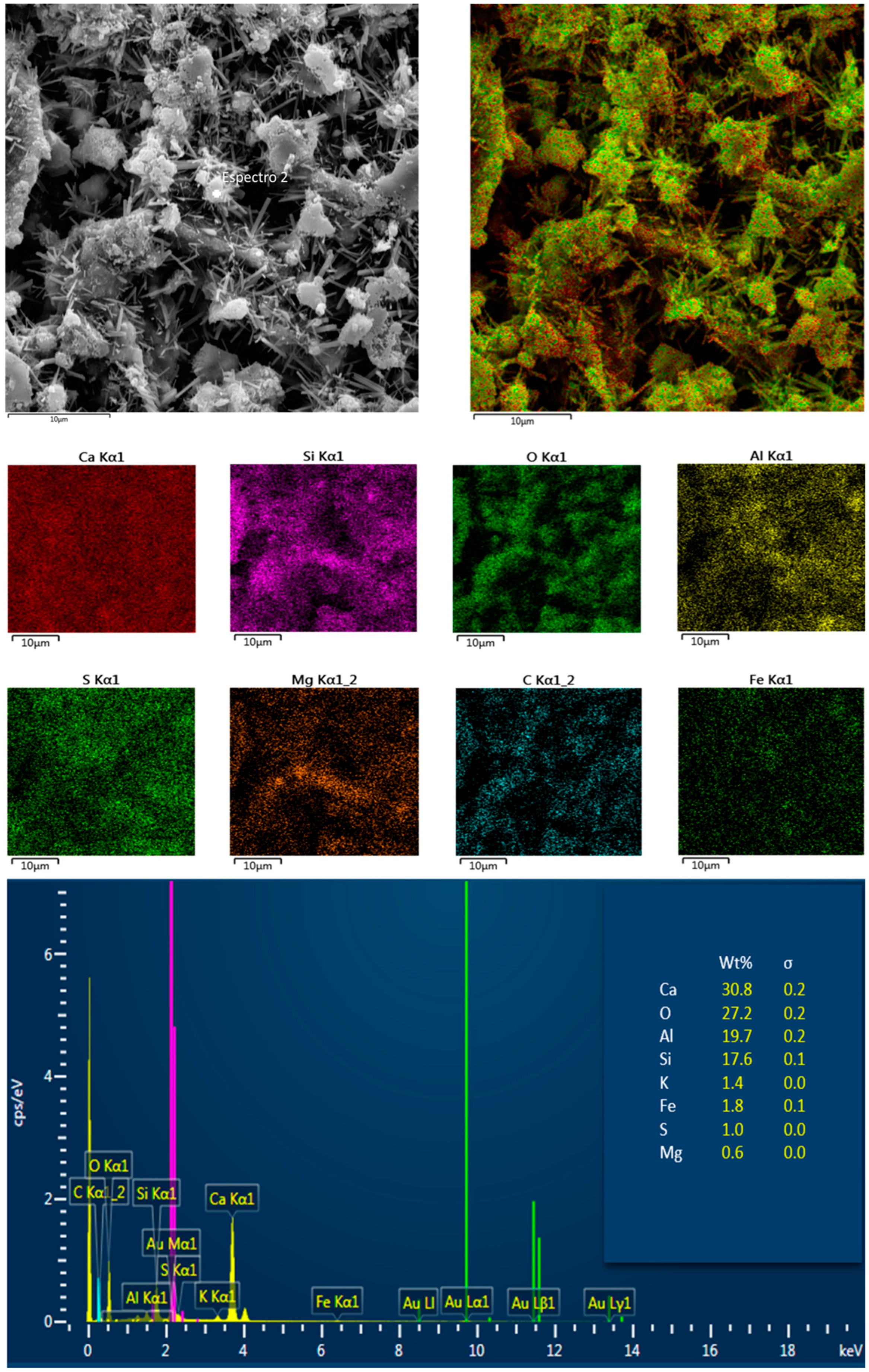
| Mortar Type | Mix | Cement (kg) | SAW (kg) | Lime CH I (kg) | Sand (kg) | Water (L) | Water/Cement Ratio | Water/Binder Ratio |
|---|---|---|---|---|---|---|---|---|
| O | 1:2:9 | 9.5 | 0.48 | 15.12 | 92.32 | 13.31 | 1.401 | 0.53 |
| N | 1:1:6 | 9.5 | 0.48 | 7.56 | 61.55 | 13.31 | 1.401 | 0.76 |
| M | 1:0.5:4.5 | 9.5 | 0.48 | 3.78 | 46.16 | 13.31 | 1.401 | 0.97 |
| Materials | Chemical Composition (%) | ||||||||||||||
|---|---|---|---|---|---|---|---|---|---|---|---|---|---|---|---|
| SiO2 | K2O | Fe2O3 | CaO | Al2O3 | Na2O | TiO2 | SO3 | MgO | ZnO | MnO | ZrO2 | P2O5 | Cr2O3 | SrO | |
| Cement CPV-ARI | 19.73 | 0.67 | 3.63 | 65.24 | 5.36 | 0.22 | 0.21 | 3.23 | 0.64 | 0.01 | 0.07 | 0.00 | 0.48 | 0.11 | 0.40 |
| SAW slag | 18.02 | 3.28 | 13.48 | 10.94 | 28.68 | 0.00 | 11.08 | 0.00 | 0.01 | 0.02 | 6.13 | 6.40 | 1.86 | 0.03 | 0.07 |
| Adhesion Strength (MPa) | Mortars with Additions of SAW Slag and without Spatter Dash Application (T1) | Mortars with Additions of SAW Slag and Spatter Dash Application (T2) | ||||
|---|---|---|---|---|---|---|
| 1:2:9 [Type O] | 1:1:6 [Type N] | 1:0.5:4.5 [Type M] | 1:2:9 [Type O] | 1:1:6 [Type N] | 1:0.5:4.5 [Type M] | |
| 1 | 0.41 | 0.74 | 0.70 | 0.53 | 1.03 | 1.22 |
| 2 | 0.33 | 0.55 | 0.78 | 0.56 | 0.95 | 1.28 |
| 3 | 0.22 | 0.61 | 0.67 | 0.50 | 1.01 | 1.17 |
| 4 | 0.33 | 0.63 | 0.70 | 0.56 | 1.03 | 1.12 |
| 5 | 0.35 | 0.66 | 0.74 | 0.53 | 0.96 | 1.19 |
| 6 | 0.24 | 0.57 | 0.72 | 0.54 | 1.07 | 1.14 |
| 7 | 0.40 | 0.61 | 0.75 | 0.51 | 1.01 | 1.19 |
| 8 | 0.37 | 0.57 | 0.86 | 0.51 | 0.97 | 1.16 |
| 9 | 0.25 | 0.54 | 0.67 | 0.46 | 0.91 | 1.05 |
| 10 | 0.34 | 0.56 | 0.75 | 0.54 | 0.93 | 1.20 |
| 11 | 0.35 | 0.63 | 0.61 | 0.53 | 0.96 | 1.21 |
| 12 | 0.36 | 0.61 | 0.58 | 0.55 | 1.10 | 1.13 |
| Average (MPa) | 0.33 | 0.61 | 0.71 | 0.53 | 0.99 | 1.17 |
| Stdev (MPa) | 0.06 | 0.05 | 0.07 | 0.03 | 0.05 | 0.06 |
| CV (%) | 17.62 | 8.71 | 10.16 | 5.35 | 5.42 | 4.81 |
Disclaimer/Publisher’s Note: The statements, opinions and data contained in all publications are solely those of the individual author(s) and contributor(s) and not of MDPI and/or the editor(s). MDPI and/or the editor(s) disclaim responsibility for any injury to people or property resulting from any ideas, methods, instructions or products referred to in the content. |
© 2024 by the authors. Licensee MDPI, Basel, Switzerland. This article is an open access article distributed under the terms and conditions of the Creative Commons Attribution (CC BY) license (https://creativecommons.org/licenses/by/4.0/).
Share and Cite
Sousa, É.; Santana, A.; Moura, M.; Delgado, J.M.P.Q.; Berenguer, R. Thermography Applied to the Adhesion Phenomenon of Mortars with Additions of Submerged Arc Welding (SAW) Slag. Buildings 2024, 14, 2960. https://doi.org/10.3390/buildings14092960
Sousa É, Santana A, Moura M, Delgado JMPQ, Berenguer R. Thermography Applied to the Adhesion Phenomenon of Mortars with Additions of Submerged Arc Welding (SAW) Slag. Buildings. 2024; 14(9):2960. https://doi.org/10.3390/buildings14092960
Chicago/Turabian StyleSousa, Érica, Alef Santana, Millena Moura, João M. P. Q. Delgado, and Romildo Berenguer. 2024. "Thermography Applied to the Adhesion Phenomenon of Mortars with Additions of Submerged Arc Welding (SAW) Slag" Buildings 14, no. 9: 2960. https://doi.org/10.3390/buildings14092960
APA StyleSousa, É., Santana, A., Moura, M., Delgado, J. M. P. Q., & Berenguer, R. (2024). Thermography Applied to the Adhesion Phenomenon of Mortars with Additions of Submerged Arc Welding (SAW) Slag. Buildings, 14(9), 2960. https://doi.org/10.3390/buildings14092960







